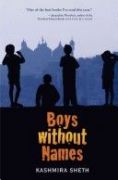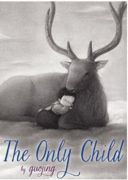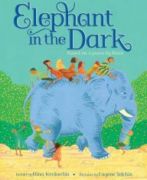
Curious and energetic Mei Mei attempts some t’ai chi forms as her grandfather demonstrates them, then tries to teach him basic yoga poses. Includes introductions to t’ai chi and yoga, as well as instructions for the exercises described in the text.
Materials from Asia

Curious and energetic Mei Mei attempts some t’ai chi forms as her grandfather demonstrates them, then tries to teach him basic yoga poses. Includes introductions to t’ai chi and yoga, as well as instructions for the exercises described in the text.

When Hee Jun’s family moves from Korea to West Virginia, he struggles to adjust to his new home. His eyes are not big and round like his classmates’, and he can’t understand anything the teacher says, even when she speaks s-l-o-w-l-y and loudly at him. As he lies in bed at night, the sky seems smaller and darker. But little by little Hee Jun begins to learn English words and make friends on the playground. And one day he is invited to a classmate’s house, where he sees a flower he knows from his garden in Korea — mugunghwa, or rose of Sharon, as his friend tells him — and Hee Jun is happy to bring a shoot to his grandmother to plant a “piece of home” in their new garden. Lyrical prose and lovely illustrations combine in a gentle, realistic story about finding connections in an unfamiliar world.
Featured in WOW Review Volume IX, Issue 4.

For eleven-year-old Gopal and his family, life in their rural Indian village is over: We stay, we starve, his baba has warned. With the darkness of night as cover, they flee to the big city of Mumbai in hopes of finding work and a brighter future. Gopal is eager to help support his struggling family until school starts, so when a stranger approaches him with the promise of a factory job, he jumps at the offer. But Gopal has been deceived. There is no factory, just a small, stuffy sweatshop where he and five other boys are forced to make beaded frames for no money and little food. The boys are forbidden to talk or even to call one another by their real names. In this atmosphere of distrust and isolation, locked in a rundown building in an unknown part of the city, Gopal despairs of ever seeing his family again. But late one night, when Gopal decides to share kahanis, or stories, he realizes that storytelling might be the boys’ key to holding on to their sense of self and their hope for any kind of future. If he can make them feel more like brothers than enemies, their lives will be more bearable in the shop—and they might even find a way to escape.

“In this novel in verse, a resilient American boy deals with bullying and the challenges of being an outsider that come with living in a Japanese fishing village”–
See the review at WOW Review, Volume 8, Issue 3

In this wordless graphic novel, a young girl traveling from her city apartment to her grandmother’s country home becomes lost and enters a fantastical world in the clouds.
See the review at WOW Review, Volume 8, Issue 3

Holi is a popular Indian festival that takes place at the end of the winter season. The celebration of Holi brings people closer together. During Holi, people welcome spring by throwing colored water or powder on one another. This story begins during the winter season, with a boy who is anxiously waiting for spring and the celebration of Holi to begin. When Holi day finally arrives, he can’t wait to celebrate. He decides to use his colored powders– before his family and friends arrive! As he explores the different colored powders, he starts to relate the colors to what he sees happening in nature during springtime. Through his own exploration, he learns more about the significance of this colorful festival.
See the review at WOW Review, Volume 8, Issue 3

As a young woman, Sonabai Rajawar finds herself alone, day after day for almost fifteen year. No family, no friends… And then one day she ‘makes’ her way out of oppressive loneliness into a world of creativity, beauty and joy. This sensitive telling of Sonabai’s story follows her transformative artistic journey from the tactile experience of her first creations in clay, innovative experiments with colours and light, and unfettered play with pattern and design to being embraced by the art world.

In this retelling of Nankichi Niimi’s masterpiece, delicate watercolors bring to life the mischievous yet kind-hearted spirit of Gon, the Little Fox. Readers should proceed with caution as they begin this tale, however, especially as Gon is sure to win over their hearts. Like many Japanese folktales, Gon, The Little Fox does not exactly end happily; a circumstance which will inspire lively and provocative conversation among young readers. When readers first meet Gon, he is relishing his life as a rascally fox. Each day brings a new opportunity for him to stir up trouble in Nakayama. One day, however, he feels remorse for having killed an eel that was meant for the poor villager Hyoju’s dying mother. Ironically, it is this rare moment of conscience that leads Gon down a path that leads to his fate. As with all great folktales, the world of Gon, The Little Fox is both extremely familiar and extremely mysterious. This quality, as evident in both the text and illustrations, will greatly appeal to readers, both young and old.

Xiao Le’s grandmother lives in a faraway village. A visit with Grandma is always a special event, but this time she is frail. With encouragement from his mom, Xiao Le plays with and helps Grandma. When Grandma dies shortly thereafter, Xiao Le comforts his mom―reminding her that when it rains, Grandma is washing her clothes in the sky . . . and that although the Perfume Village in heaven cannot be reached by train, it can be accessed by the heart.

In this version of the blind men and the elephant, based on a poem by Rūmī, Persian villagers try to figure out what strange animal in a dark barn has arrived from India.